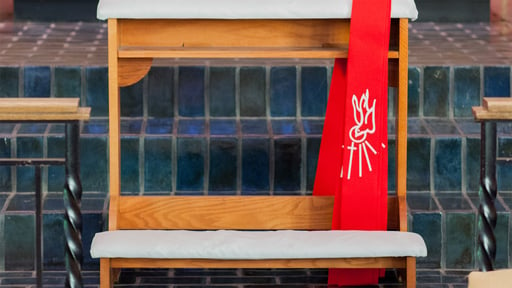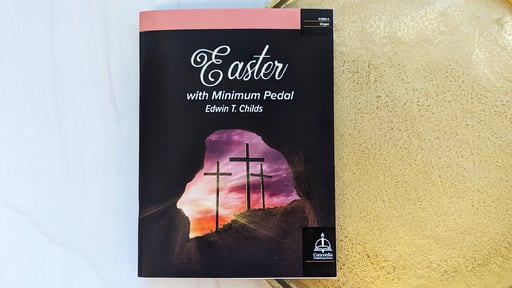“I was raised Catholic, but, I dunno. Mass is just … well, it’s so much ceremony.”
This was overheard at a recent get-together. You may have heard a similar sentiment directed at the Lutheran Divine Service and its faithful use of liturgy. It seems that ceremony can be a bit of a deterrent to some, especially in our casual culture. But I would argue that it is the very ceremony of the Divine Service that beckons and invites those outside the Church in.
After all, many things in life involve ceremony, especially that other thing that is taking over our Sundays—sports.
Sports and Ceremony
There is a routine and structure to a sports game, especially in professional leagues. Each game involves a closely followed set of rules. Every player has a position, and gestures are carefully used to signal plays, pitches, or even fouls. Teams wear particular clothing in particular colors, and their jerseys even change depending on where they are playing. There is a specific structure to the beginning of each game, such as a coin toss or ceremonial first pitch. Frequently, music plays an important role too, like the national anthem, players’ walk-up songs, and the ubiquitous seventh-inning-stretch performance of “Take Me Out to the Ball Game.”
All these things are widely accepted and celebrated. Yet there are those who balk at the ceremony in the Divine Service, which also prizes physical position, employs gestures to help communicate, utilizes specific clothing in specific colors at different times of the year, follows a special opening structure, enlists music, and involves a closely followed, traditional set of rules.
Ceremony Gives Meaning
But maybe you are one who doesn’t care much for sports. In that case, consider all the other everyday things that involve ceremony. Families find traditional structures during holidays, daily meals typically involve a set order, and even a morning routine involves a certain amount of ceremony. Ceremony gives structure and order to the things we do in our life. Although ceremonial actions are not essential to life in the same way water or oxygen may be, they give meaning to life. We would not survive long without meaning.
The ceremony of the Divine Service shows how important it is. It sets it apart from everything else we see in life. In this way, the ceremony of the Divine Service is actually a great welcome to those from the outside. It says to them, come in, you will find something different here. If the Divine Service only took its cues from the rest of the current culture, there would be no point in it. Instead, it offers people something different from their normal lives. It shows them that it has a significance they can only find in the Church. Arthur A. Just Jr. writes in Heaven on Earth: The Gifts of Christ in the Divine Service:
Our worship must immediately proclaim to our unbelieving neighbors that something is happening in the liturgy that happens nowhere else in all of creation. God, who is everywhere, chooses to locate Himself in the liturgy in Word and Sacraments.” (p. 26)
God is giving us His greatest gift in the Word and Sacrament; the ceremony of the Divine Service proclaims that.
Different Levels of Ceremony
That’s not to say that everyone will appreciate extravagant ceremony. In fact, while some Lutheran churches are very “high church,” many Lutheran churches have a little less ceremony. This reflects the make-up of the congregation—perhaps it is smaller and has fewer resources to conduct all the bells and whistles highly ceremonial churches use; perhaps the people themselves are a community that appreciates a more toned-down, but still reverent, approach. Whatever the case may be, ceremony can still be shown even if it is not with great extravagance.
Due reverence is important, and guiding people to that due reverence with a certain amount of ceremony is beneficial for the congregation. Forcing a high level of ceremony on every congregation is not. Some people may find a church’s high level of affectation in its ceremony disingenuous. Perhaps this is what the woman who spoke the opening sentence perceived in the Roman Catholic mass, although it is a messy thing to consider what is beautiful reverence and what is pretension.
Ceremony Shows What We Think Is Important
Ultimately, though, ceremony is necessary because it shows that something important is happening. If we take the Divine Service seriously, we will naturally appreciate the ceremony—and this in turn will show our neighbors what we deem important, namely, the gift of Jesus Christ’s salvation. Just continues in Heaven on Earth:
Our neighbor from the highways and byways must see that no more important business is being carried out in the world than the business transacted in the liturgy proclaimed for the life of the world. If our liturgy does not express this, then we cannot expect our visiting neighbors to return to our liturgy. If they do not see a world made new in Jesus Christ in the gifts of salvation, then they will not desire to enter into catechesis that prepares them to receive the justifying gifts of Christ in Baptism and to celebrate a world made new in Christ in the Eucharist. (pp. 26-27)
Ceremony can turn off those who are not used to it, but it is only through ceremony that we show these same people that there is something worthwhile happening when we participate in the Divine Service. More than our morning coffee routine, more than our family Thanksgiving dinner, more than even the Super Bowl, we are receiving the only gift that offers us eternal salvation.
Quotations from Heaven on Earth: The Gifts of Christ in the Divine Service © 2008 Arthur A. Just Jr., published by Concordia Publishing House.
Learn more about the Divine Service with the authoritative English translation of Friedrich Lochner’s The Chief Divine Service.






.jpg?width=50&height=50&name=IMG_20220621_160541_456%20(1).jpg)








